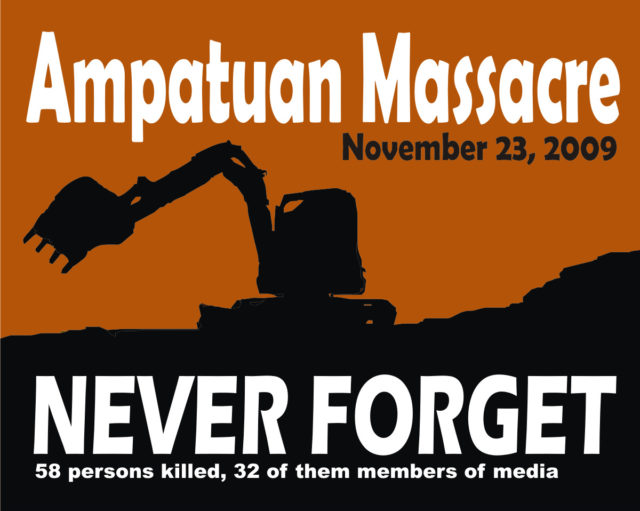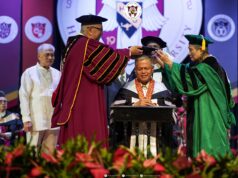NOVEMBER 23, 2009. It will most certainly live in infamy as the day of “the single worst case of journalist killings in the world, in all of history” that is the Ampatuan Massacre.
The worst political mass killing in the Philippines too –58 fatalities, 32 of them media workers.
In December last year, five members of the Ampatuan clan were convicted of 57 counts of murder, including former Datu Unsay mayor Andal Jr. and his brothers former Autonomous Region in Muslim Mindanao governor Zaldy and former Shariff Aguak mayor Anwar Sr. and sentenced to life in prison.
Their father, clan patriarch and former Maguindanao governor Andal Sr., died in 2015 while in detention.
A total of 43 suspects were convicted while 56 were acquitted.
“This is momentous verdict should help provide justice to the families of the victims, and build towards greater accountability for rights abuses in the country,” hailed Phil Robertson, deputy Asia director of Human Rights Watch.
“Advocates should use this verdict to spur further political and judicial reforms to ultimately end the impunity that has plagued the country for far too long. More broadly, this verdict should prompt the country’s political leaders to finally act to end state support for ‘private armies’ and militias that promotes the political warlordism that gave rise to the Ampatuans,“ he enthused.
The landmark convictions notwithstanding, the quest for justice over the 2009 Ampatuan Massacre is far from over.
For one, appeals remain pending nearly a year after the decision rendered by Quezon City Regional Trial Court Branch 221 Judge Jocelyn Solis-Reyes.
Two, scores of suspects have remained at large, 15 of whom per court records, are surnamed Ampatuan. There lies the sum of all fears of families of the victims, moreso, the witnesses.
In September, Presidential Communications Operations Office Undersecretary Joel Egco who sits as executive director of Presidential Task Force on Media Security was reported in media to have “touted” the decision of UNESCO to classify the Ampatuan Massacre case as “resolved” in its Observatory of Killed Journalists and Director General’s Report on the Safety of Journalists.
This prompted 18 groups and over 100 individuals, mostly human rights advocates and journalists, to write an appeal on the designation of the case, noting that one court decision “while a triumph of justice does not mean that the case is resolved,” citing the appeals and the remaining suspects who have yet to be arrested.
“This is the reason why the families of the 32 journalists who perished, as well as the witnesses who testified for the prosecution, continue to fear for their safety,” read the appeal letter. “As many are not enrolled in the Department of Justice’s witness protection program, and continue to live in their known communities, they remain exposed to possible retaliation and attacks.”
In response, UNESCO deputy director general Xing Qu said they have maintained that the case will remain classified as “ongoing/unresolved” after they learned that appeals have been launched.
Qu said the classification will remain “until such moment when a final verdict is reached by the Philippine judicial system.”
Impunity
Meanwhile, a Pangasinan-based radio commentator and columnist was gunned down by motorcycle-riding assailants only last Nov. 10, four years after surviving a similar attempt on his life.
Virgilio Maganes, a commentator for radio station dwPR, was shot several times while walking near his house at Sitio Licsab, Barangay San Blas, Villasis town at around 6:45 a.m. and was pronounced dead-on-the-spot.
Maganes was also wounded by gunmen in a motorcycle on Nov. 8, 2016.
The National Union of Journalists of the Philippines said Maganes was the 18th journalist to be killed under the Duterte administration, and the 190th since 1986.
No end to impunity. The search for justice continues. — With NUP and media reports





